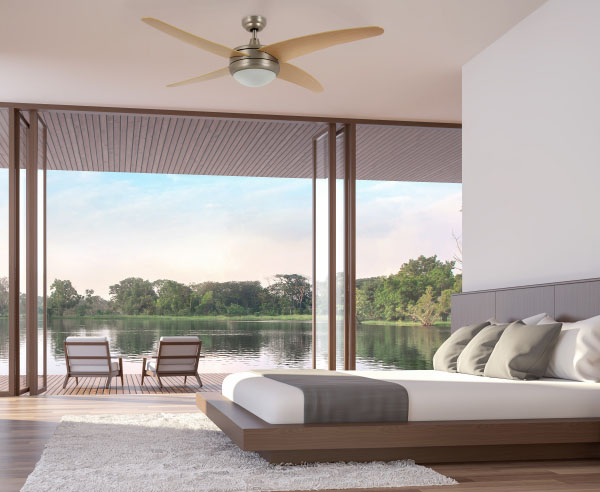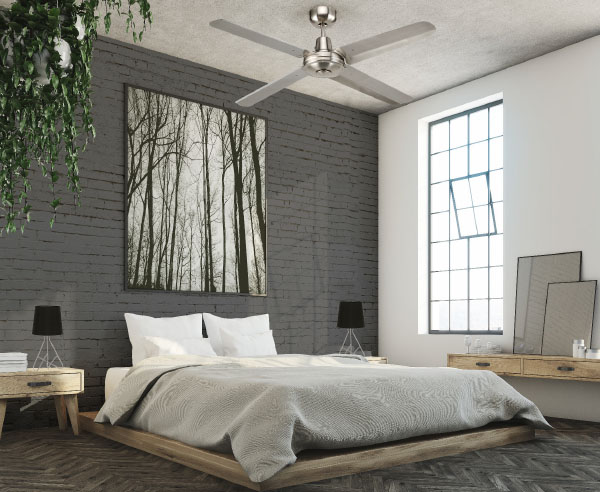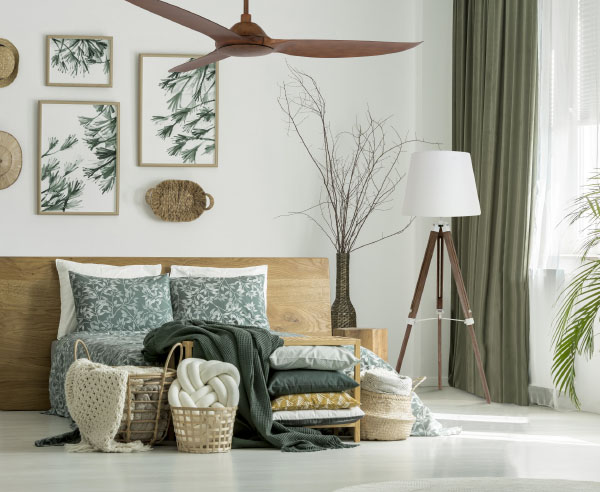 Click & Collect
Shop Online & Collect in-store
Click & Collect
Shop Online & Collect in-store
 Free Shipping
on all online orders (only) in South Africa
Free Shipping
on all online orders (only) in South Africa
 30 Day Free Returns
on all online items, hassle-free
30 Day Free Returns
on all online items, hassle-free
CEILING FAN ADVICE: INDOOR

CEILING FANS
There are many benefits to incorporating ceiling fans into your home's design. Using ceiling fans throughout your home greatly reduces energy costs while also providing comfort, style & beautiful lighting. We have expanded and updated our range of fans to complement your desired home.
It is important to choose your fan by room. We recommend you have the fan complement your features & finishes within your designed décor.
Fan Size vs Room Size
Choosing the right size ceiling fan ensures maximum performance, style and above all comfort. The right size ceiling fan will do more than just keep you cool, it can also save you money. A correct ceiling fan size for your room secures the performance and longevity of the fan as well as the comfort and safety.
A small ceiling fan in a large room will not only be less appealing to the eye but will also be ineffective in the air movement of a larger space. A large ceiling fan in a small room will overwhelm the space and create an uncomfortable amount of airflow. It is important to consider the size of the room when selecting your ceiling fan. Visit our fan section under catalogue for more accurate room specification under the product description.
Rule of numbers
Will the number of blades affect your airflow? Yes. As the number of blades increases, the quieter your fan will become but will circulate less air. This is due to the weight on your motor causing more drag and not allowing your fan motor to run at its full potential. Should you have 3 blades on your motor, it is less weight on the motor, this allows the fan to spin faster which in turn creates more air movement in your room. Bear in mind the faster the blades turn the noisier the fan will be. This is due to the blades cutting through the air.
Ceiling fans in summer
In the summer months, ceiling fans should rotate in a counter-clockwise direction when viewed from underneath. The counter-clockwise rotation creates a cool downward airflow that accelerates the evaporation of perspiration, cooling your body temperature by up to 8 degrees. It can also make your room feel a few degrees cooler, reducing your aircon bill by up to 40%.
Ceiling fans in winter
In winter months, you should run your ceiling fans in the reverse mode (you will find the switch positioned on the motor, some remote controls have the option on the remote). The fan on this setting will recirculate warm air trapped near the ceiling back down to the floor, gently re-circulating warm air through the room. The ceiling fan should operate at a low speed to prevent a wind chill effect. This technique has been proven to lower heating costs by as much as 15%. This calculation on costs and savings is only an approximate and may vary according to fan & room size.
Things to consider
• The fan blades need to clear cupboard doors when they are opened.
• Your ceiling fan blades should never cross over any light source, as this will create a flickering effect when the blades cut over the light.
• Bunk beds are not in reach of the blades or the fan itself.
• The point of installation is secure & stable.

All Zebbies ceiling fans have a 2 year warranty
*Material may have been used from external sources in order to compile this article.

















